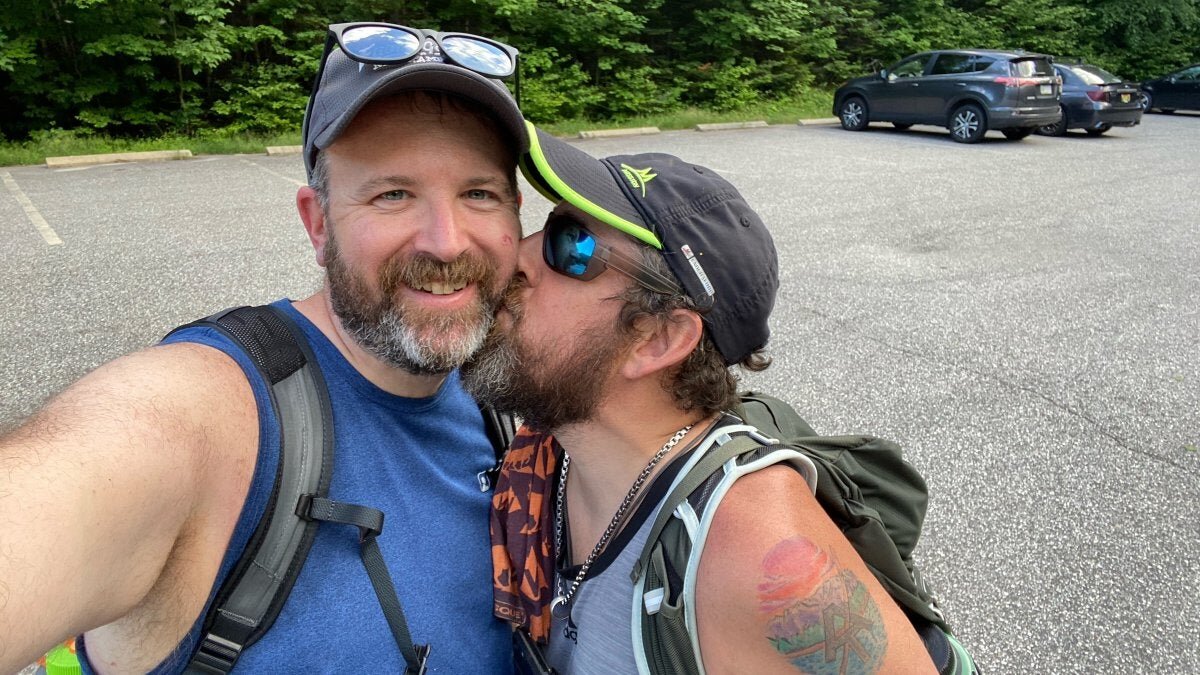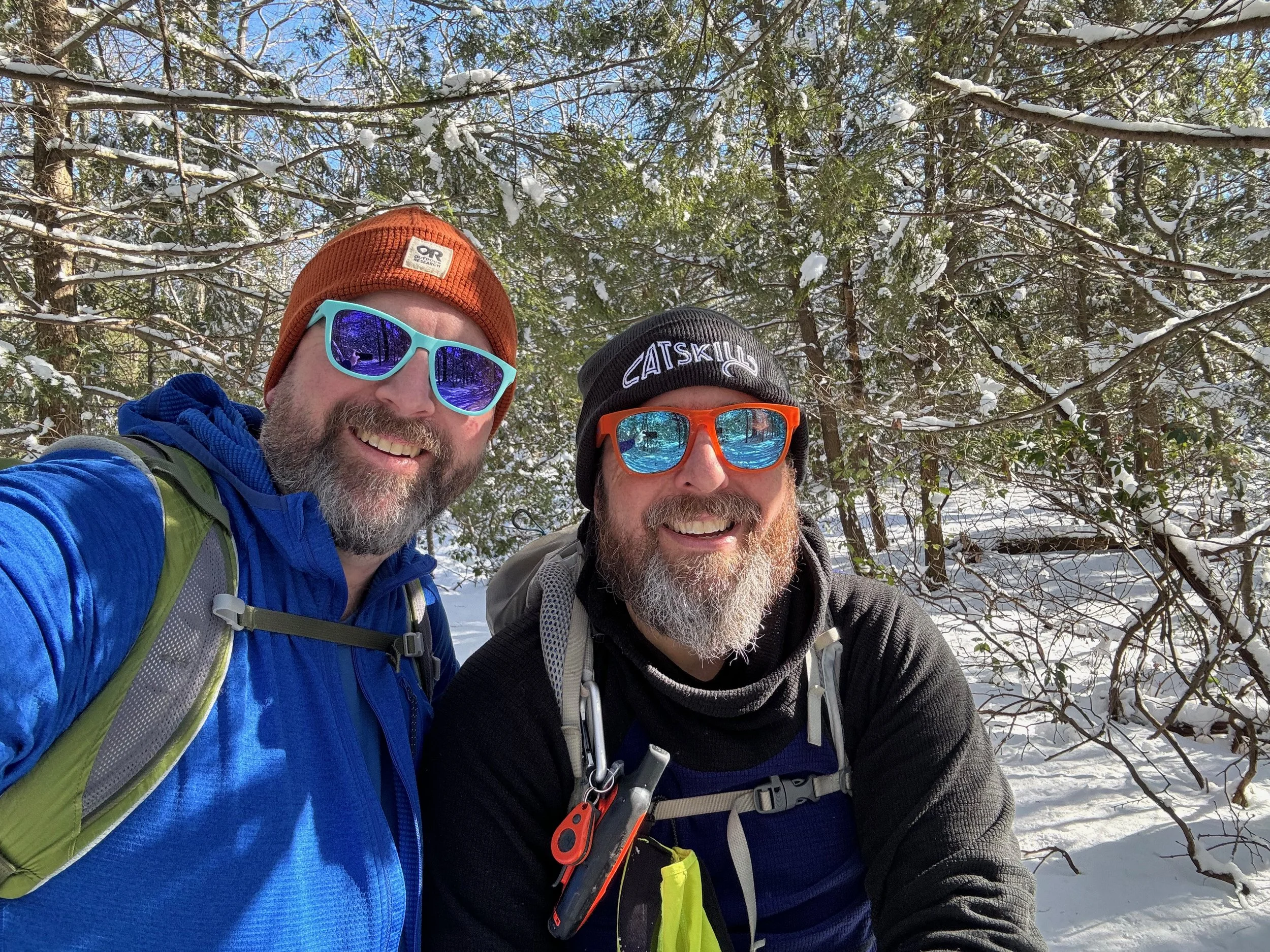Peekamoose Mountain in the Catskills
Hiking Peekamoose Mountain in the Catskills - Catskill 3500
Peekamoose Mountain (3,819’) is one of the high peaks of the Catskills, and part of the Catskill 3500 hiking challenge. The mountain makes a great destination in all seasons and includes of the few rare mountaintop vistas in the Catskills from its summit.
Peekamoose Mountain from Peekamoose Blue Hole via the Peekamoose-Table Trail Description
The Peekamoose-Table Trail is the only trail that climbs Peekamoose (along with neighboring Table Mountain) from both the east and the west. From the western trailhead in Denning, you’ll have to climb over Table Mountain before reaching Peekamoose. Since we weren’t sure we wanted to do both mountains, we opted for the eastern approach, which climbs directly to the Peekamoose summit from the trailhead on Peekamoose Road (County Route 42).
Note that the trailhead is located in the same area as the popular Peekamoose Blue Hole, so if you are hiking from this area between May 15th and September 15th, you'll need a permit to park. We were there in February, so no permit was needed, though the parking lot was mostly full when we got there for our (late) morning start.
From the trailhead on Peekamoose Road, the blue-marked Peekamoose-Table Trail climbs steadily from the trailhead about 4 miles to the summit of Peekamoose. While the majority of the trail is a gradual climb, there are several steep sections through rocky ledges. In the winter, some of those areas do become icy and can be difficult to navigate depending on the conditions. There is a vista about 3 miles up from the trailhead and 1 mile before the summit, which offers a nice view for anyone who cannot make the s ummit.
Once at the summit, which is marked by a very large boulder, the view is just off to the east, and can be reached on a short side trail.
The summit of Table Mountain is less than a mile from the summit of Peekamoose, but in this case we opted to just stick with Peekamoose as we’re working on Moe’s recovery from his broken knee and we didn’t want to push it.
Normally a hike near the end of February would have required full winter gear for the most part (snowshoes, microspikes, multiple layers of clothing, etc.), but this is no ordinary February. Snow and ice didn’t start until after you were above about 3,000-feet in elevation. From there the snow depth increased, but was very well packed and frozen, so all that we needed were microspikes.
From the summit we went back down the way we came for a total of just under 8 miles and about 2500-feet of elevation gain. We’d rate this as a moderate to difficult hike, not for any technically difficult climbing sections, but due to the length and the amount of elevation gain, both of which are longer than many other climbs in the Catskills.
Peekamoose-Table Trail Summary
Trailhead: Peekamoose-Table Trailhead on Route 42 in Sundown Wild Forest near Peekamoose Blue Hole
Distance: 8.6 miles round-trip to Peekamoose Mountain
Elevation Gain: Around 2,700 feet
Difficulty: Moderate to strenuous
Route Type: Out-and-back
Highlights: Quiet woodland trail, moss-covered streams, summit ledge views
Trail Conditions: Steady climb with some rocky and root-filled sections. Well-marked.
Need to Know: Peekamoose is a Catskill 3500 peak and can be combined with Table Mountain for a longer day. Permits are required to park between May 15th and September 15th. At other times, trailhead parking can fill fast.
For More Information on the Peekamoose-Table Trail
You can find out more about this this hike here:
Additional Catskill Park information is available at the Catskills Visitor Center (5096 Route 28 in Mt. Tremper) On the Web, Facebook, and Instagram.
Hike On Guides: Need help on a hike like this? Moe is a NYS licensed hiking and backpacking guide. You can hire him for Hiking, Backpacking and Camping Guide Services at Hike On Guides for hikes in New York, New Hampshire, Vermont, and Massachusetts.
Gear we used on this hike:
Some product links are affiliate links and we earn from qualifying purchases. Others are links through the Amazon Influencer program and as an Amazon Influencer, we earn from qualifying purchases. Still others, we just want you to know about some good gear we enjoy!
Important Hiking Considerations:
Weather: Check the weather forecast before your hike and be prepared for changes in conditions.
Safety: Some sections of the trail can be steep and rocky, so use caution and watch your footing.
Leave No Trace: As with any outdoor activity, remember to follow the principles of Leave No Trace. Pack out any trash, stay on the trail, and be respectful of the natural environment.






